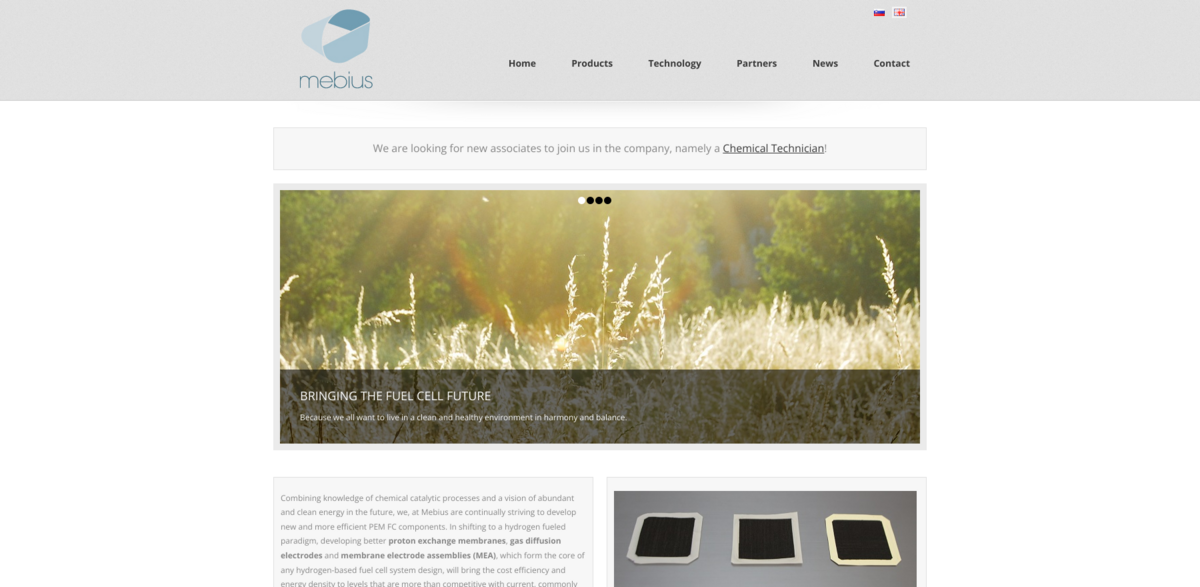What the Mebius Project Is All About
Combining deep knowledge of chemical catalytic processes with a bold vision for abundant and clean energy, Mebius is pushing the boundaries in developing new and more efficient components for PEM fuel cells. The shift towards a hydrogen-fueled energy paradigm demands proton exchange membranes, gas diffusion electrodes, and membrane electrode assemblies (MEA) that not only perform better but also bring cost efficiency and energy density to levels competitive with today’s mainstream energy production methods. At the core of this effort is Mebius’ proprietary technology and innovative production techniques, aiming to revolutionize hydrogen-based fuel cell systems.
The Main Benefit: Game-Changing Catalyst Technology
The heart of Mebius’ breakthrough lies in a Pt-skin over a structurally ordered Cu3Pt alloyed core-shell catalyst, developed in collaboration with the National Institute of Chemistry in Ljubljana. Here are some key figures and facts that highlight why this matters:
- Scaling up manufacturing from 20g to over 200g per batch is already underway.
- Only a few layers of platinum atoms cover the PtCu3 core, making all Pt atoms available for electrocatalytic reactions.
- Unlike ordinary Pt/C catalysts, this design avoids limitations related to nanoparticle size distribution.
- Electro-catalytically active surface area (ESA) ranges between 20 and 40 m²/gPt, lower than typical Pt/C catalysts, but with much higher specific and mass activities.
- Nearly double the activity compared to similar Pt-transition metal alloyed catalysts, thanks to the structurally ordered shell beneath the Pt skin.
- Outstanding stability: no Ostwald ripening, no nanoparticle detachment, and resistance to carbon corrosion under various electric potential protocols.
Innovative Manufacturing and Testing Processes
The catalyst synthesized in 20g batches is transformed into catalyst ink, which is then ink-jet deposited onto wet-proofed carbon cloth (GDL-CT, FuelCellsEtc) to create gas diffusion electrodes (GDEs). These GDEs are hot-pressed with Nafion® 115 membranes in H+ form, producing MEAs with an active electrode area of 5×5 cm². Testing on a CompuCell GT test station at 65°C and 80% relative humidity of fed gases on both electrodes has yielded impressive polarization curves. These results clearly show the superior performance of the Pt-skin over Cu3Pt/C catalyst compared to commercial Pt/C catalysts.
Performance That Speaks Volumes
When comparing MEAs, the one with the Pt-skin over Cu3Pt/C catalyst is about six times more active than MEAs prepared with commercial Pt/C catalyst electrodes at 0.6 V versus RHE. This is no small feat, especially under realistic operating conditions. The enhanced activity and durability open doors to more cost-effective and efficient PEM fuel cells, which could be a real game-changer for hydrogen energy adoption.
Proprietary IP and Production Technology
Mebius holds proprietary intellectual property for producing catalytic nanoparticles and leverages ink-jet printing technology to manufacture electrodes and MEAs. This combination not only lowers material input costs but also boosts MEA performance through greater precision and reliability. The approach is a smart blend of cutting-edge science and advanced manufacturing techniques, aimed at making PEM fuel cells more accessible and practical for widespread use.
Project Impact on Sustainable Development Goals (SDGs)
- SDG 7: Affordable and Clean Energy – advancing hydrogen fuel cell technology for cleaner energy solutions.
- SDG 9: Industry, Innovation, and Infrastructure – developing innovative catalysts and manufacturing processes.
- SDG 12: Responsible Consumption and Production – improving efficiency and reducing material waste in fuel cell production.
- SDG 13: Climate Action – enabling low-carbon energy alternatives to reduce greenhouse gas emissions.
Looking Ahead: The Future of PEM Fuel Cells
With its cutting-edge catalyst technology and innovative manufacturing methods, Mebius is setting the stage for a future where hydrogen fuel cells are not just viable but highly competitive with traditional energy sources. The ability to precisely control platinum distribution and avoid common degradation mechanisms means longer-lasting, more efficient fuel cells. As the industry moves toward scaling up production and real-world application, projects like this are crucial in driving the hydrogen economy forward—cleaner, smarter, and more sustainable.





















